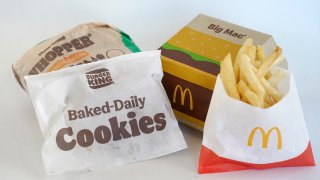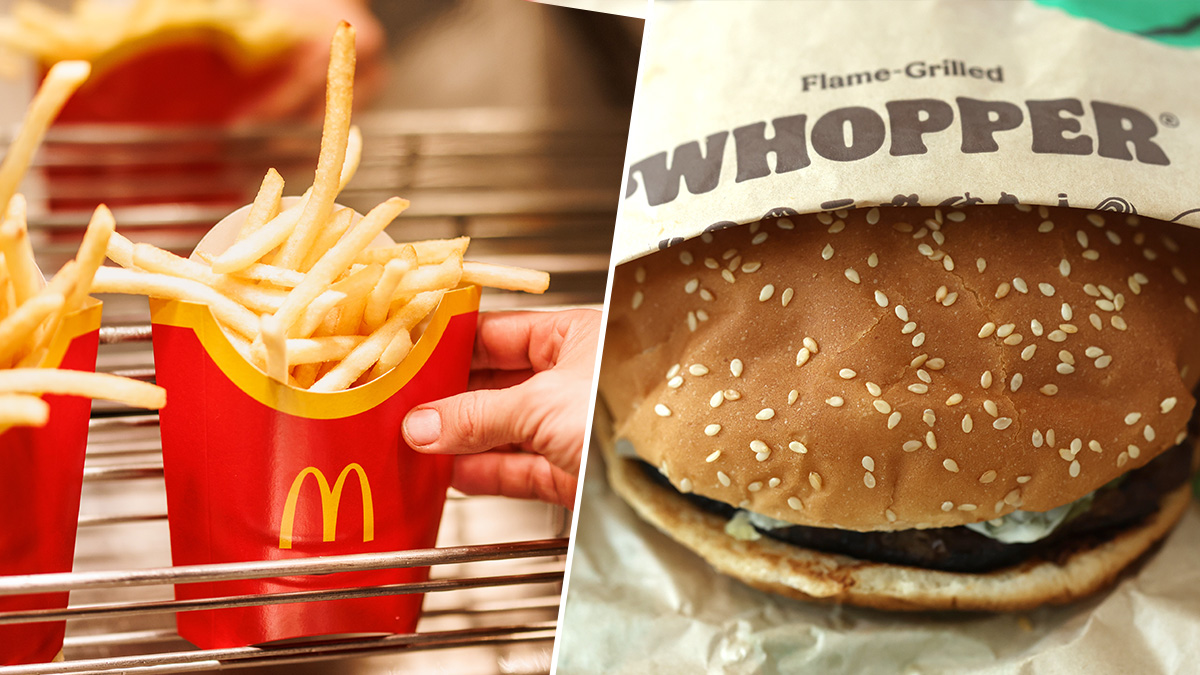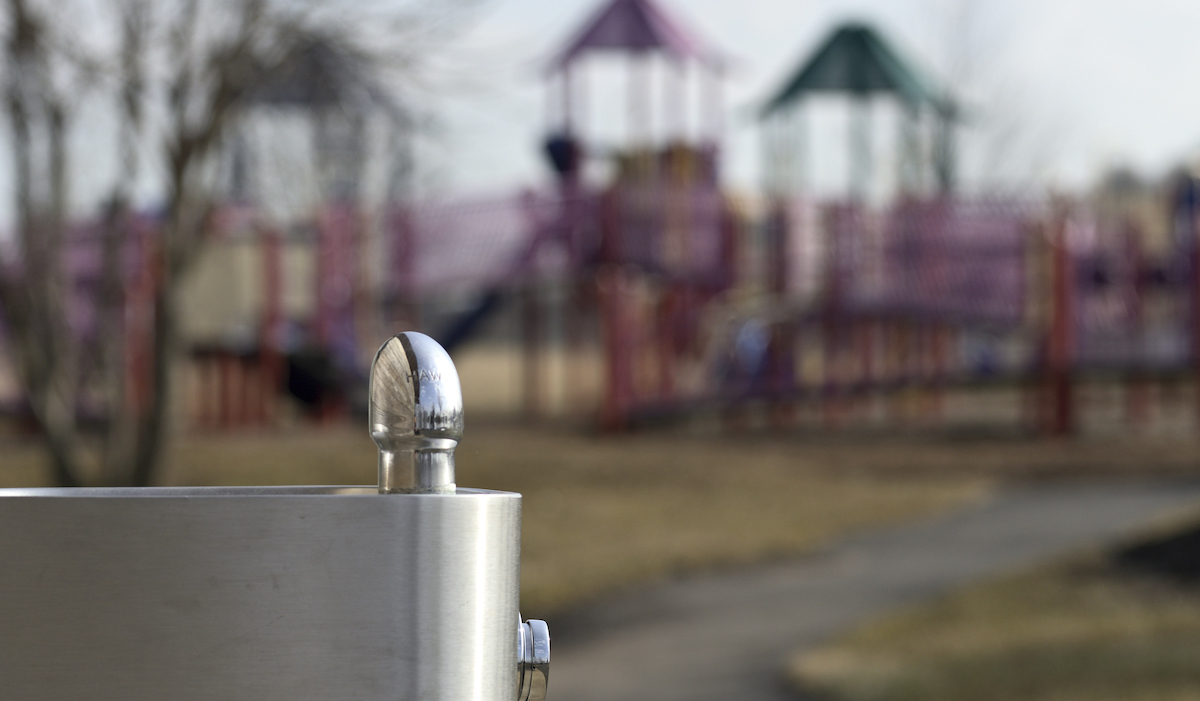
Brenda Hampton first came across the toxic industrial compound PFAS after finding it was part of the cocktail of contaminants that tainted the drinking water in her North Alabama community.
Hampton, who believes the contaminated water contributed to kidney problems she and other residents suffer, soon learned the chemicals were found in another source that hit close to home — fast food wrappers, boxes and plates.
Knowing her three daughters and eight grandchildren ate their share of burgers and fries, she joined the national fight in 2020 to ban PFAS in food packaging.
"Everybody is eating fast food. Fast food is selling everywhere. No one has time to cook anymore,” said Hampton who teamed with the environmental health advocacy group Toxic-Free Future to spearhead a petition drive last year that collected nearly 75,000 signatures. McDonald's later announced it would remove PFAS from all its packaging.
Environmental and health groups are pushing dozens of fast food companies, supermarkets chains and other retail outlets to remove PFAS chemicals from their packaging. Known as “forever chemicals" for their persistence in the environment, they have been used for decades to prevent grease, water and other liquids from soaking through wrappers, boxes and bags.
Opponents of the practice argue the packaging poses a danger to consumers as well as the environment, since the waste ends up in landfills. in compost or is incinerated where the chemicals can leach into groundwater or soil. They contend there are safer alternatives.
Several groups have maintained that many major brands use packaging with PFAS and that testing at times showed extremely high levels.
A 2017 study by the Massachusetts-based nonprofit research organization Silent Spring Institute found PFAS in almost half of paper wrappers and 20% of boxes from 27 fast food outlets. Tests by Toxic-Free Future in 2018 produced similar results. And, this year, Consumer Reports found eight restaurants, including McDonald’s, Burger King and Cava, had packaging that had more than 100 parts per million of fluorine, which indicates likely presence of PFAS.
“One of the concerns is that, especially with the pandemic, we’ve seen just this huge increase in food packaging, delivery, takeout,” said Sheela Sathyanarayana, a professor of pediatrics at the University of Washington and Seattle Children’s Research Institute whose 2021 study found 16 different PFAS chemicals in the breast milk of mothers.
“We have much, much higher potential for exposure to these kinds of chemicals to everybody in the population, not just certain segments of the population,” she said. “Basically eating or drinking is one of the biggest sources of exposure.”
Get a weekly recap of the latest San Francisco Bay Area housing news. >Sign up for NBC Bay Area’s Housing Deconstructed newsletter.
Tom Flanagin, a spokesman for the American Chemistry Council, said his group supports the Food and Drug Administration’s agreement with several manufacturers to voluntary phase out some PFAS chemicals used in substances applied to food packaging. But his group opposes what he described as “unscientific, ‘one-size-fits-all’ restrictions on the entire class of PFAS chemistries.”
"The mere presence of PFAS does not indicate a health risk,” Flanagin said. “All PFAS are not the same. Individual chemistries have different uses, as well as environmental and health profiles."
Studies have linked PFAS exposure to increased cancer risk, developmental delays in children, damage to organs such as the liver and thyroid, increased cholesterol levels and reduced immune functions, especially among young children, according to the U.S. Environmental Protection Agency.
Less studied are health hazards from PFAS in packaging, where the chemicals give material a reflective sheen.
A 2019 study by Silent Spring Institute found people who ate at home had on average lower PFAS levels in their blood than those who ate fast food or ate more frequently at restaurants including pizza places. FDA studies of rodents also found that some PFAS chemicals in grease-resistant paper can bioaccumulate in the body.
However, there are few guidelines about what levels of PFAS in food packaging, if any, are potentially harmful.
The EPA only sets a voluntary health advisory level of 70 parts per trillion for two PFAS chemicals in drinking water. The FDA, which regulates use of certain PFAS chemicals in food packaging, came out in 2020 with a three-year, voluntary phase-out program. The agency is reviewing a petition from environmental groups calling for a PFAS ban in food packaging.
In the U.S., only California sets a limit of 100 parts per million of total fluorine in food packaging.
The absence of federal standards has shifted the fight over PFAS in food packaging to state legislatures.
California, Washington, Vermont, Connecticut, Maryland, Maine, Minnesota and New York have passed bills banning PFAS from being purposely added to food packaging, according to the advocacy group Safer States.
Seven other states are considering similar legislation. Federal legislation has also been introduced.
In Vermont, the push to ban PFAS in packaging was inspired by findings that the chemicals had contaminated some of the state's drinking water. As a result, the legislature passed a bill last year banning PFAS and other chemicals including bisphenols and phthalates in food packaging as well as in carpeting, ski wax and firefighting foam.
“Most people just look at the tissue paper around their sandwich and they think I got my sandwich. But the reality is that the coating on that sandwich paper is PFAS,” said the bill's author, Democratic state Sen. Ginny Lyons. “It's not very much chemical but if you eat a lot of wrapped sandwich and use a lot of paper plates over time that chemical accumulates in the body and can cause cancer or other disorders.”
The regulations have coincided with bans announced by some of the largest restaurants and retailers.
Fourteen fast-food and fast-casual restaurant chains with a total of nearly 124,000 stores and over $203.2 billion in annual sales have committed to removing PFAS from their food packaging, according the Toxic-Free Future. Among them are McDonald's, Starbucks and Whole Foods. Restaurant Brands International, which owns Burger King, Popeyes and Tim Horton, also plans to eliminate PFAS.
“If there are harmful chemicals in food packaging, people get that those chemicals can migrate into food,” said Mike Schade, who directs Toxic-Free Future's market transformation work. “This is something that really resonates with consumers.”
None of the companies have referenced health concerns in announcing their PFAS bans. Instead, most stated a desire to use sustainable packaging or said a ban was the right thing to do. A spokesperson for Whole Foods said many factors went into its decision, including that PFAS was a “persistent environmental contaminant.”
The challenge now will be for these companies to find safer alternatives. Environmental groups are urging companies to switch to safer alternatives such as uncoated paper, bamboo or plastic derived from corn starch or sugar cane — and alternative coatings including bio-wax or clay.
Washington must first find safer alternatives exist before the state's ban takes effect in the next two years. Its assessments found there are alternatives for all takeout containers.
"Manufacturers can replace PFAS in their food packaging, which will protect people and the environment from these harmful chemicals," said Lauren Tamboer, a spokesperson for the Washington Department of Ecology.



